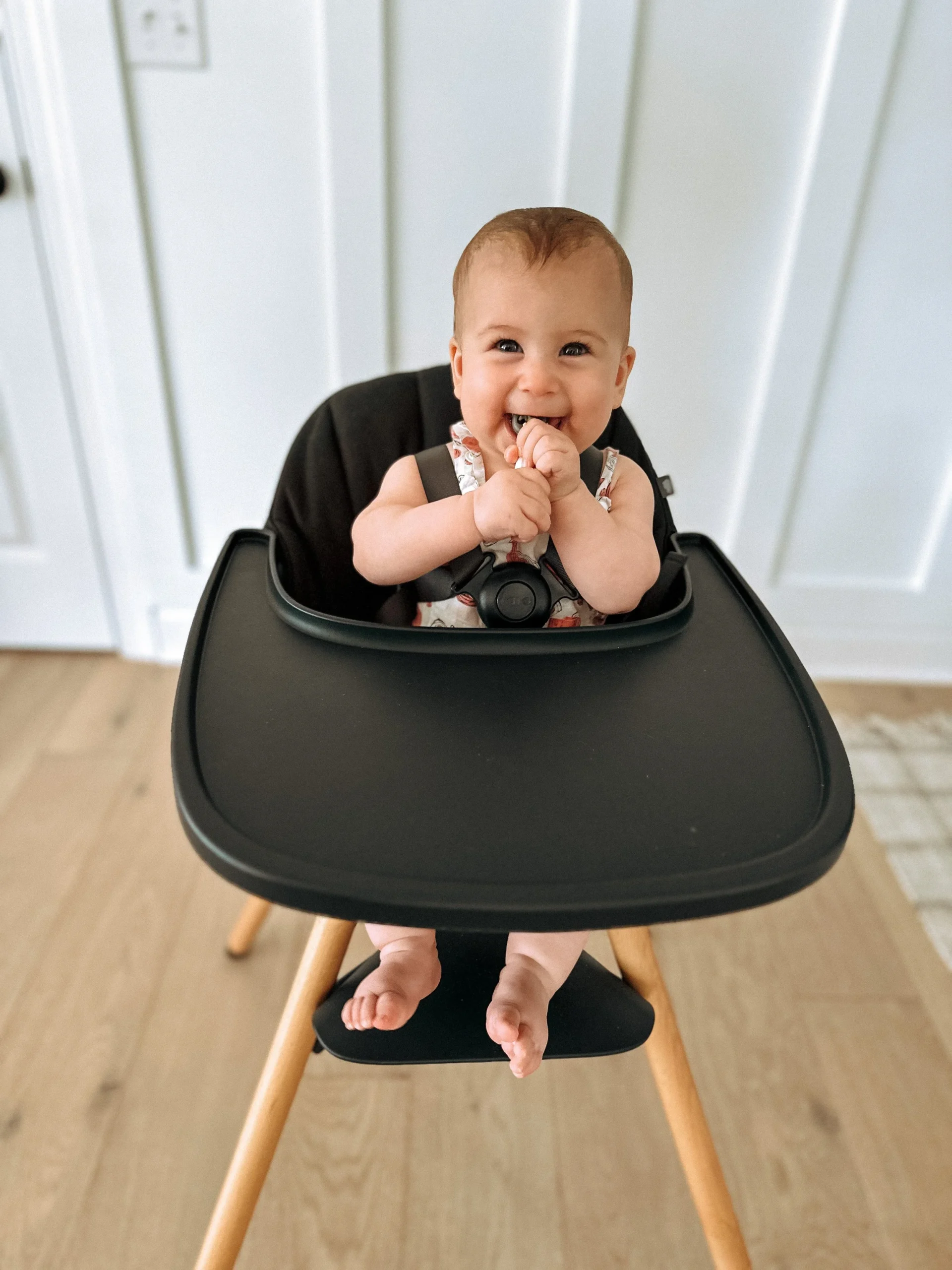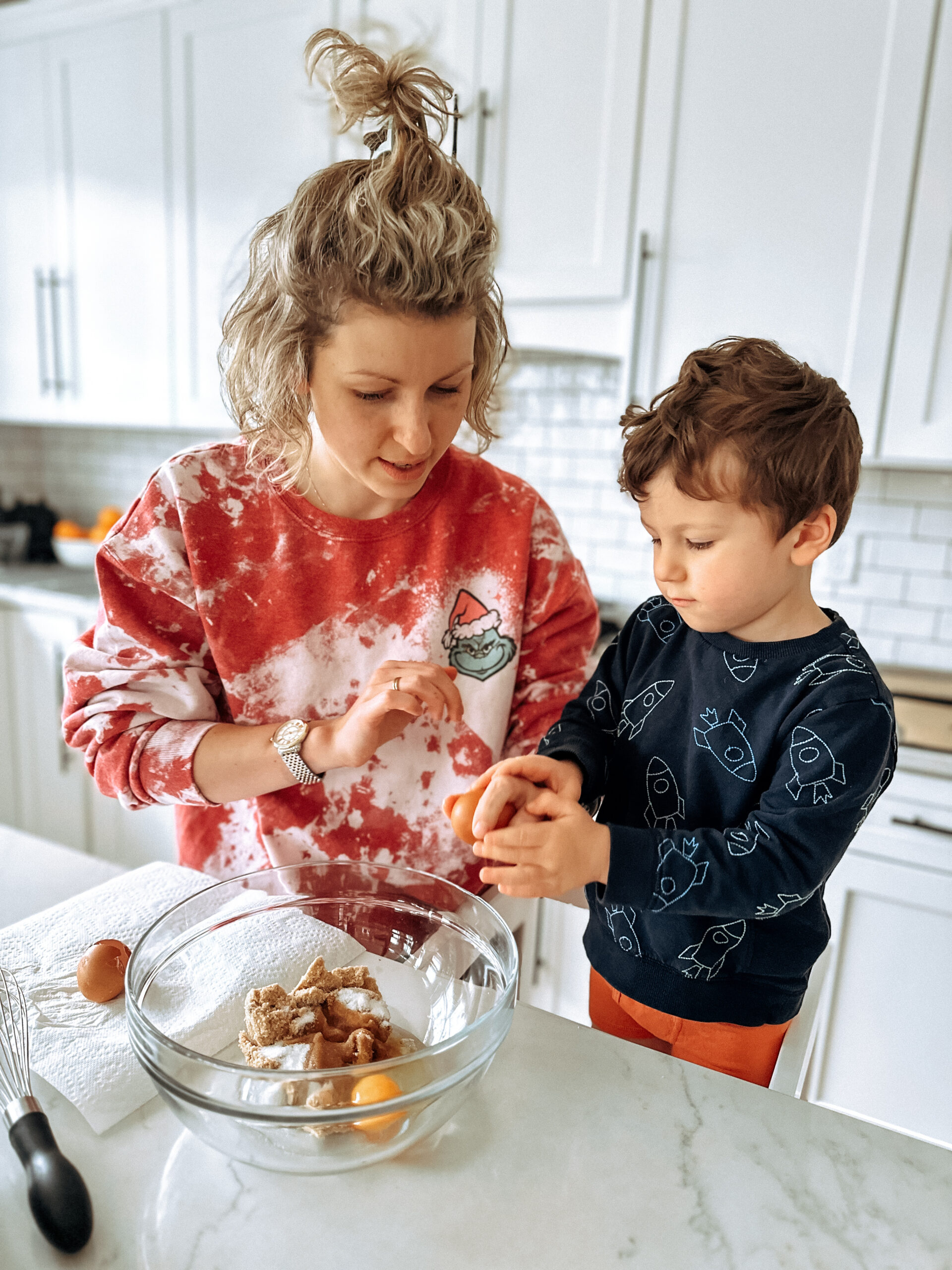As a pediatric feeding specialist, I get asked this question all the time, “Is it better to start with purees for a while and then move up to chewable foods? Or should we skip the purees all together and go right to chewable foods?”
It’s really not as black and white as you’d think! I actually did both approaches to feeding with my (very different) babies, and let me tell you, they both turned out to be “good” eaters. So, let’s break this down.
What is Baby Led Weaning?
First, let’s start with some definitions, and just like there are multiple opinions about BLW, there are different definitions, too.
For example, Solid Starts (solidstarts.com) website in 2021 defined BLW as, “A method of introducing solid food to babies whereby purées and spoon-feeding are skipped entirely in favor of finger foods that a baby self-feeds.”
In recent years, other food specialists have defined BLW as a method of introducing foods to baby where baby self-feeds all or the majority of bites and the caregiver does not offer bites to baby.
The main thing with BLW is that the focus is on offering naturally occurring foods and letting baby bring all bites to their mouth.
BLW focuses on starting solids around 6 months, or once baby can sit up unassisted and shows readiness signs for eating.
What are Baby Purees?
The counter approach to BLW is starting with a puree on a spoon, such as previously recommended rice cereal or a pureed fruit/vegetable.
The parent/caregiver offers the food to the baby and baby doesn’t self-feed many or any bites.
These purees may be introduced around 6 months, but they are typically introduced earlier around 4-5 months of age.
Some parents are told by professionals that baby doesn’t need to sit up unsupported to eat purees, but we know from this blog, that unsupported sitting should be a prerequisite for any and all food textures.
Pros & Cons of Baby Led Weaning
This is a good question, but there’s more to it than that. I think it’s important to know the Pros and Cons of each so that you can make a decision that’s best for your baby.
BLW is considered a “feeding fad” to some and a “feeding lifestyle” to others. BLW has some good underlying principles, but also some limitations. Let’s break down the Pros and Cons of BLW…
BLW Pros:
-
Encourages independence, self-feeding, and hand-to-mouth experience with foods.
-
Encourages baby to use gestures to communicate when they want to eat food and when they are finish eating.
-
Allows baby to take the lead with eating and listen to hunger cues as they are more in control of their bites.
-
Provides baby with exposure to individual foods as opposed to a blended puree of different foods.
-
Gets baby chewing early! We know that babies who are chewing before 10 months of age are less likely to be labeled “picky” by their parents in toddlerhood. And chewing is excellent for jaw development and for speech production, too! (1)
-
Usually starts closer to 6 months. Baby’s gross motor skills are more developed (e.g., greater trunk stability and neck control), which is important for a good eating experience.
BLW Cons:
-
BLW can be strict. Some BLW professionals promote saying no to spoons, no purees, etc. This can be pressuring to parents and restrictive to littles.
-
Baby does not usually get exposure to a spoon. This can impact their speech-language skills (remember spoon feeding supports bilabial sounds like “ma” and “ba” and provides input to the mouth).
-
Some BLW professionals discount purees as a texture, but purees naturally occur in the world. Hummus, yogurt, applesauce, sour cream, and soup are all examples of purees. It’s not a good idea to skip over any texture, as exposure to all textures is what makes a well-rounded eater.
-
Babies might not be ready right at 6 months. Looking at skills is more important than looking at age.
-
Some parents expect babies to self-feed at 6 months of age, when their baby may not yet be developmentally ready. This can place unfair expectations on the baby and lead to negative eating experiences.
-
Sometimes parents offer baby foods that are not developmentally appropriate for their skill level. This can cause a negative experience with food (e.g., excessive gagging, choking episode). Just because soft solids can be offered, doesn’t mean that baby will do well with them right off the bat!
Pros & Cons of Starting Solids with Purees
Spoon feeding purees is considered the “traditional feeding approach.” Regardless of the history, spoon feeding purees also has pros and cons.
Puree Pros:
-
Purees are usually most developmentally appropriate for babies who are able to sit or up in the high chair. Babies are less likely to have a negative experience with this texture because it’s smooth, easy to manage, and easy to offer.
-
Spoon feeding supports speech-language skills. When babies use a spoon, they tend to find their lips, which then leads to producing more sounds like “ma” and “ba” and raspberries.
-
Purees help teach baby how to mash food. Then, they learn how to manage other solid foods when they are introduced (e.g., banana, avocado, peanut butter).
Puree Cons:
-
Parents sometimes end up “doing all the work” and scraping the spoon of puree on the baby’s upper lip. Baby ends up not being as active a participant in eating and waits for the parent/guardian to initiate.
-
Purees provide baby with less opportunities to self-feed. The utensil use can be harder to achieve than grasping food in the hand and bringing it to the mouth. With purees, parents are also doing most of the feeding, so baby may not look to self-feed as often or at all.
-
Parents may take longer to expose their child to higher textures, like lumpy or mashed solids. Parents sometimes continue to feed baby purees because it is “easier” and that can delay their oral motor skill progression.
-
Some parents get in the habit of hiding foods in a puree food combination. Hiding foods in purees doesn’t allow baby to taste each food individually and can lead to later refusal of foods.
Can You Combine Baby Led Weaning and Purees?
Looking at development, it is most appropriate for one of baby’s first foods to be a puree on the spoon. But the good news is, it doesn’t have to be all or nothing.
The foundational principles of BLW are solid! It is very important to encourage sensory and individual food exploration with baby’s hands as soon as they start sitting in the high chair.
I recommend that while spoon feeding, offer the same puree or some soft mashable solid foods on the tray. With this method, baby learns the skill of spoon feeding AND has an opportunity to bring hands to mouth.
Baby can learn independence and self-feeding skills! Baby can learn how to eat from a spoon and support speech-language skills.
After baby’s oral motor skills mature with spoon feeding, you can slowly replace purees with more solid foods and help baby self-feed as needed. You can still take a baby-led approach with purees, as long as you are letting baby be an active participant in eating.
Sources:
-
Emmett PM, Taylor CM. Being inspired: What we have learned about picky eating in childhood from using questionnaires on feeding practices and behaviors in a longitudinal birth cohort. Curr Res Psychiatry. 2021;1(4):48-51. PMID: 35419570; PMCID: PMC7612611.
I don’t want babies to have a bad experience with solids because they weren’t ready.
I don’t want parents to be spoon-feeding their baby forever and leave them with little to no food exploration.
You can have the best of both worlds with the Starting Solids Handbook.
Feed your baby how you want to, with the tools to get your baby chewing!








